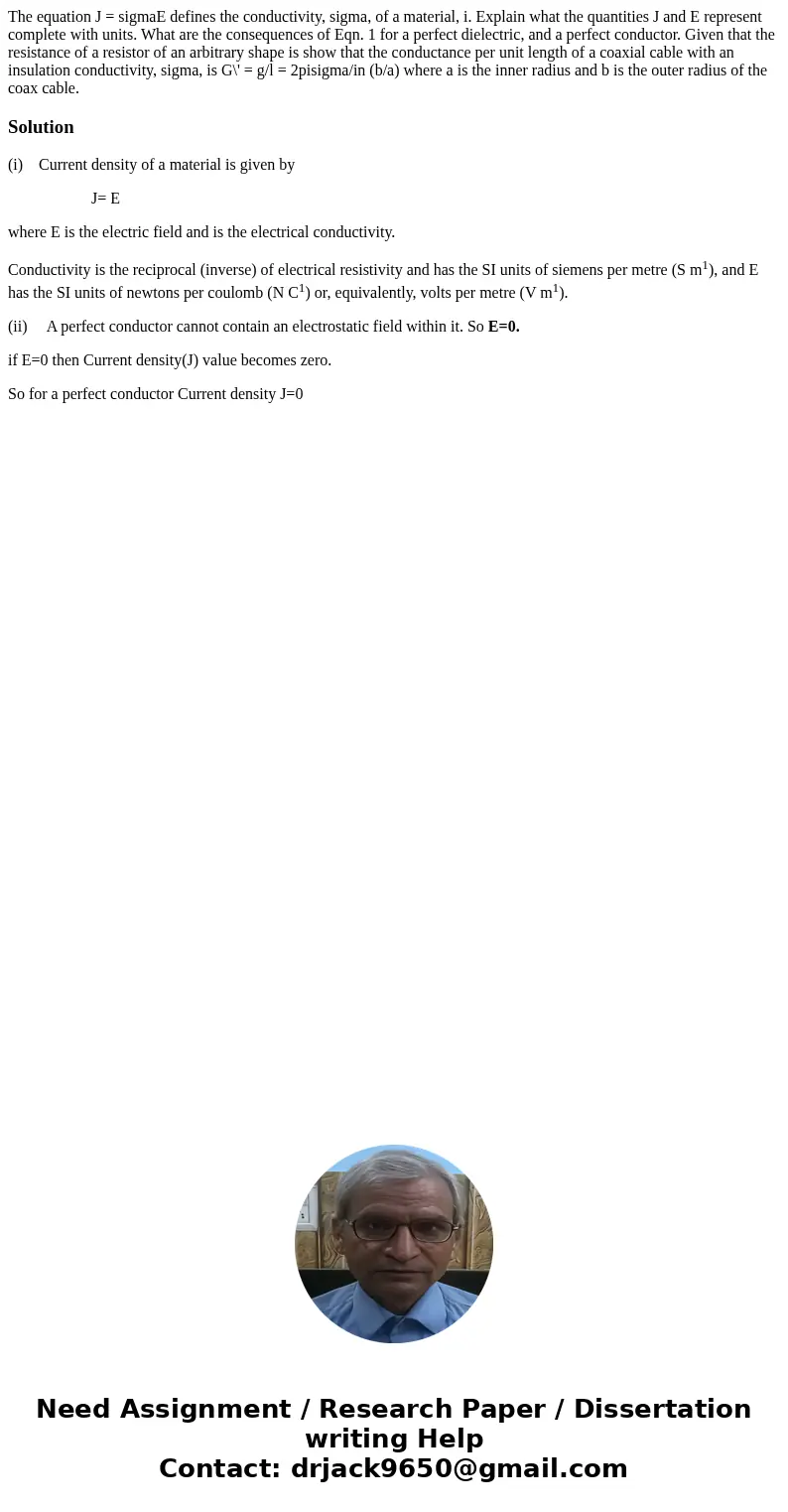The equation J sigmaE defines the conductivity sigma of a m
The equation J = sigmaE defines the conductivity, sigma, of a material, i. Explain what the quantities J and E represent complete with units. What are the consequences of Eqn. 1 for a perfect dielectric, and a perfect conductor. Given that the resistance of a resistor of an arbitrary shape is show that the conductance per unit length of a coaxial cable with an insulation conductivity, sigma, is G\' = g/l = 2pisigma/in (b/a) where a is the inner radius and b is the outer radius of the coax cable.
Solution
(i) Current density of a material is given by
J= E
where E is the electric field and is the electrical conductivity.
Conductivity is the reciprocal (inverse) of electrical resistivity and has the SI units of siemens per metre (S m1), and E has the SI units of newtons per coulomb (N C1) or, equivalently, volts per metre (V m1).
(ii) A perfect conductor cannot contain an electrostatic field within it. So E=0.
if E=0 then Current density(J) value becomes zero.
So for a perfect conductor Current density J=0

 Homework Sourse
Homework Sourse